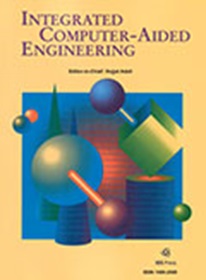Automated detection of vehicles with anomalous trajectories in traffic surveillance videos
IF 5.3
2区 计算机科学
Q1 COMPUTER SCIENCE, ARTIFICIAL INTELLIGENCE
引用次数: 0
Abstract
Video feeds from traffic cameras can be useful for many purposes, the most critical of which are related to monitoring road safety. Vehicle trajectory is a key element in dangerous behavior and traffic accidents. In this respect, it is crucial to detect those anomalous vehicle trajectories, that is, trajectories that depart from usual paths. In this work, a model is proposed to automatically address that by using video sequences from traffic cameras. The proposal detects vehicles frame by frame, tracks their trajectories across frames, estimates velocity vectors, and compares them to velocity vectors from other spatially adjacent trajectories. From the comparison of velocity vectors, trajectories that are very different (anomalous) from neighboring trajectories can be detected. In practical terms, this strategy can detect vehicles in wrong-way trajectories. Some components of the model are off-the-shelf, such as the detection provided by recent deep learning approaches; however, several different options are considered and analyzed for vehicle tracking. The performance of the system has been tested with a wide range of real and synthetic traffic videos.交通监控视频中异常轨迹车辆的自动检测
来自交通摄像机的视频馈送可用于许多目的,其中最重要的是与监测道路安全有关。车辆轨迹是危险行为和交通事故的关键因素。在这方面,至关重要的是检测那些异常的车辆轨迹,即偏离正常路径的轨迹。在这项工作中,提出了一个模型,以自动解决的视频序列从交通摄像机。该方案逐帧检测车辆,跨帧跟踪其轨迹,估计速度矢量,并将其与其他空间相邻轨迹的速度矢量进行比较。通过速度矢量的比较,可以检测到与相邻轨迹非常不同(异常)的轨迹。在实际应用中,这种策略可以检测出行驶在错误轨道上的车辆。模型的一些组件是现成的,例如最近的深度学习方法提供的检测;然而,考虑和分析了几种不同的车辆跟踪方案。该系统的性能已经通过大量真实和合成的交通视频进行了测试。
本文章由计算机程序翻译,如有差异,请以英文原文为准。
求助全文
约1分钟内获得全文
求助全文
来源期刊

Integrated Computer-Aided Engineering
工程技术-工程:综合
CiteScore
9.90
自引率
21.50%
发文量
21
审稿时长
>12 weeks
期刊介绍:
Integrated Computer-Aided Engineering (ICAE) was founded in 1993. "Based on the premise that interdisciplinary thinking and synergistic collaboration of disciplines can solve complex problems, open new frontiers, and lead to true innovations and breakthroughs, the cornerstone of industrial competitiveness and advancement of the society" as noted in the inaugural issue of the journal.
The focus of ICAE is the integration of leading edge and emerging computer and information technologies for innovative solution of engineering problems. The journal fosters interdisciplinary research and presents a unique forum for innovative computer-aided engineering. It also publishes novel industrial applications of CAE, thus helping to bring new computational paradigms from research labs and classrooms to reality. Areas covered by the journal include (but are not limited to) artificial intelligence, advanced signal processing, biologically inspired computing, cognitive modeling, concurrent engineering, database management, distributed computing, evolutionary computing, fuzzy logic, genetic algorithms, geometric modeling, intelligent and adaptive systems, internet-based technologies, knowledge discovery and engineering, machine learning, mechatronics, mobile computing, multimedia technologies, networking, neural network computing, object-oriented systems, optimization and search, parallel processing, robotics virtual reality, and visualization techniques.
 求助内容:
求助内容: 应助结果提醒方式:
应助结果提醒方式:


